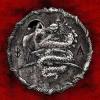- Formiculture.com
- Forums
- Gallery
- Members
- Member Map
- Chat
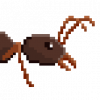
¿Red mite?
Started By
antshome
, Jan 27 2018 6:07 AM
11 replies to this topic
#1
 Offline
-
Posted January 27 2018 - 6:07 AM
Offline
-
Posted January 27 2018 - 6:07 AM
Hello everyone!
We are a Spanish family that has just acquired a Messor Barbarus's queen (with a small colony).
When we received the shipment, it came, what appears to be, a red mite.
Here you have some videos of the whole process (they are in Spanish subtitled in English).
1:
2:
3:
We have consulted in several forums and nobody seems to know exactly what type of mite it is.
It does not look like the little ones that end up killing whole colonies ... it's bigger and it was only in the head of one of the ants. It seems more an opportunist who feeds on the remains of food in the mouth of the ant than a parasite. But we do not know what it is ...
Does anyone know what type of mite it is?
Thanks and regards.
- Mettcollsuss likes this
ANTS HOME < our Youtube channel
#2
 Offline
-
Posted January 27 2018 - 9:27 AM
Offline
-
Posted January 27 2018 - 9:27 AM
#3
 Offline
-
Posted January 27 2018 - 10:25 AM
Offline
-
Posted January 27 2018 - 10:25 AM
You can use a sturdy fine brush to remove the mite from the ant. It works quite well and the risk of injuring the ant is much lower than when trying it with a steel pincer that can easily crush an ant leg.
Edited by Serafine, January 27 2018 - 12:09 PM.
We should respect all forms of consciousness. The body is just a vessel, a mere hull.
Welcome to Lazy Tube - My Camponotus Journal
#4
 Offline
-
Posted January 27 2018 - 2:14 PM
Offline
-
Posted January 27 2018 - 2:14 PM
Rather than videos, can you get some pictures of it? Also, if that worker with that "mite" ever comes out foraging, don't let it back inside until you remove the mite off of it.
Hi! Here it is the mite...
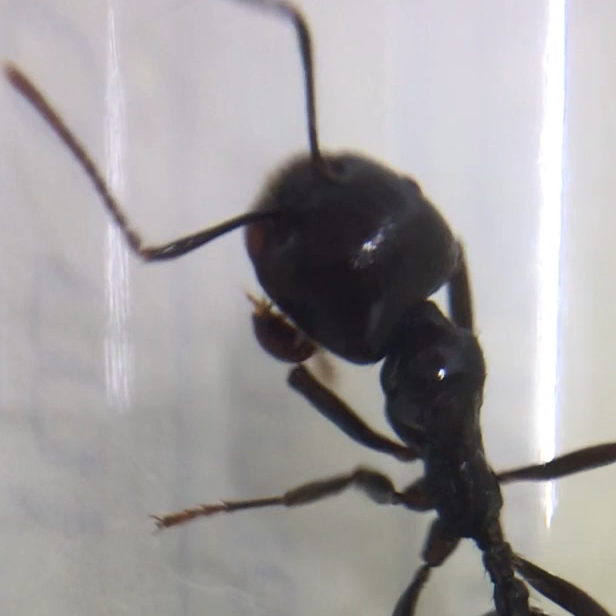
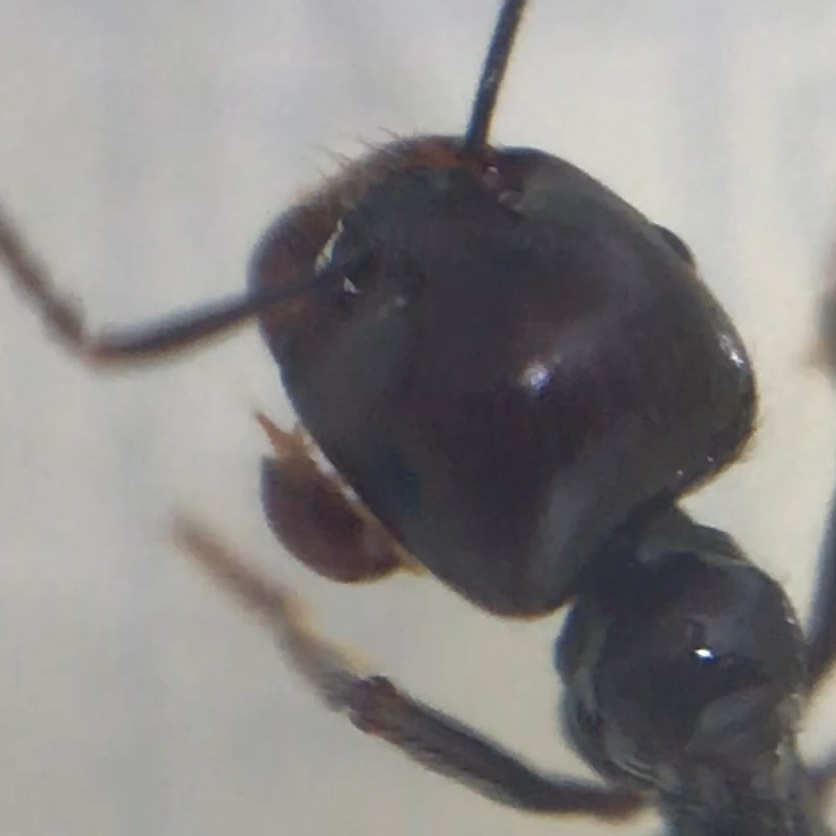

We already remove the mite from the worker... We have not seen any other!
Any idea what kind of bug it is?
You can use a sturdy fine brush to remove the mite from the ant. It works quite well and the risk of injuring the ant is much lower than when trying it with a steel pincer that can easily crush an ant leg.
Yes! We thought that it would be very attached to the ant, but simply when we took the worker with my hand the mite fall off only and was stuck to my finger.
Next time (hopefully there is not...) we already know how to remove it easily.
Edited by antshome, January 27 2018 - 2:15 PM.
ANTS HOME < our Youtube channel
#5
 Offline
-
Posted January 27 2018 - 4:43 PM
Offline
-
Posted January 27 2018 - 4:43 PM
Identifying mites is quite difficult however the fact that this adult mite actually actively took a ride on the ants is not a good sign and it was very likely the right decision to remove it. Yes, there are mites that hitch-ride on ants but it's usually their larval stages that do this to get to new living spaces, not the adults. My guess is that it was one of those mites that latch onto ants and eat a portion of the food when ants exchange food via tropholaxis (although she would have had a hard time on Messor because as far as I know Messor don't do tropholaxis regularly). She probably got introduced from another colony at the trader's storage facility.
- LC3 likes this
We should respect all forms of consciousness. The body is just a vessel, a mere hull.
Welcome to Lazy Tube - My Camponotus Journal
#6
 Offline
-
Posted January 28 2018 - 9:45 AM
Offline
-
Posted January 28 2018 - 9:45 AM
Identifying mites is quite difficult however the fact that this adult mite actually actively took a ride on the ants is not a good sign and it was very likely the right decision to remove it. Yes, there are mites that hitch-ride on ants but it's usually their larval stages that do this to get to new living spaces, not the adults. My guess is that it was one of those mites that latch onto ants and eat a portion of the food when ants exchange food via tropholaxis (although she would have had a hard time on Messor because as far as I know Messor don't do tropholaxis regularly). She probably got introduced from another colony at the trader's storage facility.
Serafine, thanks for you answer...
Yes, I realize that is quite difficult to identify... in fact no one really knows what kind of mite is this, but I also believe, like you, that this is more an opportunist than a parasite.
Anyway, it is already out and, for now, there is no sign of any more.
Thaks a lot and regards!
ANTS HOME < our Youtube channel
#7
 Offline
-
Posted January 28 2018 - 12:59 PM
Offline
-
Posted January 28 2018 - 12:59 PM
I have to admit, that looks a lot like some of the parasitic mites that killed a whole Pheidole colony of mine once.
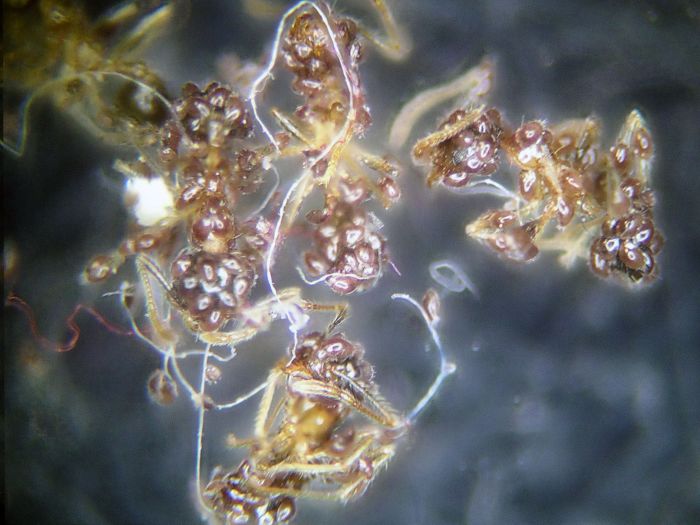

Definitely not one of the harmless, fast moving, long legged compost mites you commonly find living in formicariums. The good thing was without a host or water, they were dead within eight hours.
#8
 Offline
-
Posted January 28 2018 - 1:26 PM
Offline
-
Posted January 28 2018 - 1:26 PM
I have to admit, that looks a lot like some of the parasitic mites that killed a whole Pheidole colony of mine once.
Definitely not one of the harmless, fast moving, long legged compost mites you usually see in your formicarium. The good thing was without a host or water, they were dead within eight hours.
They look alike, yes ... the only thing is that this one was bigger. It is likely that the mite will be found in a different growth state, a little more advanced.
Also, it was alone and we have not seen any more.
We hope they do not reproduce and appear again...
ANTS HOME < our Youtube channel
#9
 Offline
-
Posted January 28 2018 - 2:07 PM
Offline
-
Posted January 28 2018 - 2:07 PM
could it be Oplitis moseri
#10
 Offline
-
Posted January 28 2018 - 2:50 PM
Offline
-
Posted January 28 2018 - 2:50 PM
#11
 Offline
-
Posted February 4 2018 - 11:33 PM
Offline
-
Posted February 4 2018 - 11:33 PM
could it be Oplitis moseri
Hi Hunter, yes! It seems,... Could be... but it's really a bit more bigger than this. Maybe it's and adult state of growth of this kind of mite. The truth is that when we remove it from our ant it have not reappeared again.
So good news!
could it be Oplitis moseri
Identification of Mites is far too difficult, especially since we have very little info on these mites.
Hi T.C.!
Yes, something I learn with this mite "story" is than no one seems to know much about it... hehehehe. Thanks every one indeed!
Regards!
ANTS HOME < our Youtube channel
#12
 Offline
-
Posted February 8 2018 - 5:32 AM
Offline
-
Posted February 8 2018 - 5:32 AM
The admin of the german ameisenforum.de just relayed me an email from the German entomologist Dr. Buschinger pointing me to a topic at the ameisenportal.eu forum where they have found this topic and identified the mite (it actually confirms what I had expected, it's a food parasite).
He cannot contact anyone directly since he doesn't have an account on Formiculture but he thinks it is important that antkeepers are aware that this type of mite exists.
I translated the original german post to my best ability.
Re: Mites
Post from Merkur » Monday 5. February 2018, 11:18
Red (reddish brown?) Mites on Messor barbarus from Spain
http://www.formicult...com/topic/7920-
"We have consulted in several forums and nobody seems to know exactly what type of mite it is."
Here it is being discussed which mite this could be: It's relatively big, very mobile and has been found on a founding colony of Messor barbarus (from Spain). It seems to be getting food from the mouth parts of the queen.It is most likely a comensal mite from the genus Antennophorus. Mites like these have been known since 1897 (Janet, 1897) - comensal(lic?) means "dinner table companion" (latin mensa = table): The parasite is living off the food of it's host organism. With their elongated, antenna-like front legs these mites can even cadge food from their host ants.
Picture source: Hölldobler & Wilson 1990: The Ants, S. 491, Fig.13-5
Edited by Serafine, February 8 2018 - 5:38 AM.
- drtrmiller and LC3 like this
We should respect all forms of consciousness. The body is just a vessel, a mere hull.
Welcome to Lazy Tube - My Camponotus Journal
1 user(s) are reading this topic
0 members, 1 guests, 0 anonymous users








